| Wednesday, September 26 | |||||||||||||||||||||||||||||||||||||||||||||||||||||||||||||||||
| 17:30 | |||||||||||||||||||||||||||||||||||||||||||||||||||||||||||||||||
|
Claudia Prediger
CAST e.V.

|
BIOSIG registration
|
||||||||||||||||||||||||||||||||||||||||||||||||||||||||||||||||
| 19:30 | |||||||||||||||||||||||||||||||||||||||||||||||||||||||||||||||||
|
-
|
EAB Award ceremony and BIOSIG welcome reception
|
||||||||||||||||||||||||||||||||||||||||||||||||||||||||||||||||
Thursday, September 27 BIOSIG - MAIN CONFERENCE - |
|||||||||||||||||||||||||||||||||||||||||||||||||||||||||||||||||
| 10:00 | |||||||||||||||||||||||||||||||||||||||||||||||||||||||||||||||||
|
Christoph Busch
Hochschule Darmstadt
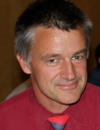
|
BIOSIG Conference Opening
|
||||||||||||||||||||||||||||||||||||||||||||||||||||||||||||||||
| 10:10 | |||||||||||||||||||||||||||||||||||||||||||||||||||||||||||||||||
|
Rasa Karbauskaite
FRONTEX

|
KEYNOTE
Implementation and operational Impact of Biometric Systems for Border Control
European border management is currently undergoing significant transformation and facing new and evolving challenges. Biometric technology plays a significant role in enabling and facilitating more modern, effective and efficient border management in the Schengen area. The existing and future information systems in the EU for border management and internal security relies on biometric data an interoperability. The use of biometric systems for border control constitutes operational and technical challenges. It changes the border checks process, has a significant impact on day-to-day operations and creates new risks and vulnerabilities. Frontex supports Member States in harmonised implementation and operationalisation of new systems at external borders by developing capability tools such as best practices, guidelines, risk management framework and training, just to name a few.
CAST-Mitglieder können hier die Vortragsunterlagen herunterladen.
|
||||||||||||||||||||||||||||||||||||||||||||||||||||||||||||||||
| 10:50 | |||||||||||||||||||||||||||||||||||||||||||||||||||||||||||||||||
|
Bernhard Prommegger
University of Salzburg

|
Longitudinal Finger Rotation
Problems and Effects in Finger-Vein Recognition
Longitudinal rotation of the finger influences the performance of biometric finger-vein recognition systems. In this work, the impact of this rotation on several well-established finger-vein recognition schemes has been investigated.
CAST-Mitglieder können hier die Vortragsunterlagen herunterladen.
|
||||||||||||||||||||||||||||||||||||||||||||||||||||||||||||||||
| 11:20 | Break | ||||||||||||||||||||||||||||||||||||||||||||||||||||||||||||||||
| 11:55 | |||||||||||||||||||||||||||||||||||||||||||||||||||||||||||||||||
|
Javier Galbally
EC-JRC

|
Fingerprint Quality: a Lifetime Story
Currently, it is a largely accepted fact that biometric sample quality is the most determinant factor to achieve high recognition accuracy in biometric systems. However, there is still a lack of evidence on how quality evolves throughout the life of an individual. The present paper addresses this key problem for fingerprint biometrics based on a database of over 400K fingerprints coming from more than 250K different fingers.
CAST-Mitglieder können hier die Vortragsunterlagen herunterladen.
|
||||||||||||||||||||||||||||||||||||||||||||||||||||||||||||||||
| 12:25 | |||||||||||||||||||||||||||||||||||||||||||||||||||||||||||||||||
|
Patrick Schuch
NTNU

|
Unsupervised Learning of Fingerprint Rotations
The alignment of fingerprint samples is a preprocessing step in fingerprint recognition. It allows an improved biometric feature extraction and a more accurate biometric comparison. We propose to use Convolutional Neural Networks for estimation of the rotational part. The main contribution is an unsupervised training strategy similar to Siamese Networks for estimation of rotations. The approach does not need any labelled data for training. It is trained to estimate orientation differences for pairs of samples. Our approach achieves an alignment accuracy with a mean absolute deviation 2.1° on data similar to the training data, which supports the alignment task. For other datasets accuracies down to 6.2° mean absolute deviation are achieved.
CAST-Mitglieder können hier die Vortragsunterlagen herunterladen.
|
||||||||||||||||||||||||||||||||||||||||||||||||||||||||||||||||
| 12:55 | Lunch-Break | ||||||||||||||||||||||||||||||||||||||||||||||||||||||||||||||||
| 14:05 | |||||||||||||||||||||||||||||||||||||||||||||||||||||||||||||||||
|
Pascal Keilbach
Hochschule Konstanz

|
Fingerprint Presentation Attack Detection using Laser Speckle Contrast Imaging
Laser speckle contrast imaging (LSCI) is a technology widely used in biomedical applications in order to monitor blood flow. This work uses the blood flow information provided by LSCI for fingerprint presentation attack detection. In the experiments conducted on a database comprising 32 different artefacts, the results show that the proposed approach classifies correctly all bona fides. However, the technology experiences difficulties with thin and transparent overlay attacks.
CAST-Mitglieder können hier die Vortragsunterlagen herunterladen.
|
||||||||||||||||||||||||||||||||||||||||||||||||||||||||||||||||
| 14:35 | |||||||||||||||||||||||||||||||||||||||||||||||||||||||||||||||||
|
Domenick Poster
West Virginia University

|
Deep Sparse Feature Selection and Fusion for Textured Contact Lens Detection
Distinguishing between images of irises wearing textured lenses versus those wearing transparent lenses or no lenses is a challenging problem due to the subtle and fine-grained visual differences. We apply group sparsity to groups of hand-crafted and CNN features to select optimal subsets of features and fuse them into a single model. The resulting model achieves state-of-the-art accuracy on the Clarkson Livdet 2013, IIITD, and NotreDame textured lens detection datasets.
CAST-Mitglieder können hier die Vortragsunterlagen herunterladen.
|
||||||||||||||||||||||||||||||||||||||||||||||||||||||||||||||||
| 15:05 | |||||||||||||||||||||||||||||||||||||||||||||||||||||||||||||||||
|
Ali Khodabakhsh
NTNU
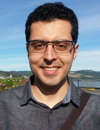
|
Fake Face Detection Methods: Can They Be Generalized?
With advancements in technology, it is now possible to create representations of human faces in a seamless manner, which can be used to conduct personation attacks on the targeted subjects. We collected a new dataset of personations from video sharing websites, which were created by diverse generation methods, and made it publicly available to simulate further research. Furthermore, we evaluated the generalizability of the existing fake face detection methods on this dataset, illustrating the vulnerability of these methods in face of new attacks.
CAST-Mitglieder können hier die Vortragsunterlagen herunterladen.
|
||||||||||||||||||||||||||||||||||||||||||||||||||||||||||||||||
| 15:35 | Break | ||||||||||||||||||||||||||||||||||||||||||||||||||||||||||||||||
| 16:10 | |||||||||||||||||||||||||||||||||||||||||||||||||||||||||||||||||
|
Hadi Kazemi
West Virginia University

|
Unsupervised Facial Geometry Learning for Sketch to Photo Synthesis
We propose an unsupervised method to learn sketch to photo synthesis. The proposed method uses a so-called Geometry-Discriminator to learn high level facial features in addition to the texture. We use a perceptual cycle consistency to give more flexibility to the netowrk in modifying the geometry of the sketch.
CAST-Mitglieder können hier die Vortragsunterlagen herunterladen.
|
||||||||||||||||||||||||||||||||||||||||||||||||||||||||||||||||
| 16:40 | |||||||||||||||||||||||||||||||||||||||||||||||||||||||||||||||||
|
Samik Banerjee
Avishek Bhattacharjee
IIT Madras
|
Deep Domain Adaptation for Face Recognition using images captured from surveillance cameras
The paper proposes a novel adaptive-CNN architecture of deep learning refurbished for domain adaptation (DA), to overcome the difference in feature distributions between the gallery and probe samples. The proposed architecture consists of three components: feature (FM), adaptive (AM) and regressor (RM) modules trained using a novel 2-stage algorithm for Mutually Exclusive Training (2-MET) based on stochastic gradient descent. This helps the proposed deep-DA CNN network to bridge the disparities in the distributions of the gallery and probe samples, resulting in enhanced domain-invariant representation for efficient deep-DA learning and classification.
CAST-Mitglieder können hier die Vortragsunterlagen herunterladen.
|
||||||||||||||||||||||||||||||||||||||||||||||||||||||||||||||||
| 17:10 | |||||||||||||||||||||||||||||||||||||||||||||||||||||||||||||||||
|
|
Opening Poster Session
|
||||||||||||||||||||||||||||||||||||||||||||||||||||||||||||||||
| 18:40 | Social Event: Dinner with Barbeque | ||||||||||||||||||||||||||||||||||||||||||||||||||||||||||||||||
| 09:00 | |||||||||||||||||||||||||||||||||||||||||||||||||||||||||||||||||
|
Patrick Grother
NIST

|
KEYNOTE
Results of the Face Recognition Vendor Test 2018
FRVT 2018 is being conducted to assess state-of-the-art face recognition accuracy. In April 2014, NIST Interagency Report 8009 documented accuracy of algorithms supplied to NIST in October 2013 applied to identification of cooperative mugshot-style images. The best result, for an NEC algorithm, was a rank 1 miss rate of 4.1% (FNIR = 0.041, N = 1,600,000, T = 0, single image enrollment), with the next best developer at 9.1%. Re-running the identical experiment with February 2018 algorithms has yielded a miss rate below 0.4%, with algorithms from 16 of 32 developers beating the 2013 NEC benchmark. This remarkable improvement, obtained on images with imperfect ISO/IEC 19794-5 conformance, shows that the new generation of CNN-based algorithms have been adopted by developers and should replace the operationally installed base. The question, advanced as CNN results first appeared in the literature, of whether they would demonstrate discrimination ability key for large N in addition to their famous invariance properties (pose, illumination etc.) is also addressed. FRVT 2018 includes results for N up to 12 million and for high-threshold, low false positive identification rates (FPIR below 0.001). These show large, but reduced, gains since 2013. The study includes results also for wild, webcam and surveillance images. Implementations vary: a wide range of performance remains across the industry, with accuracy spanning more than an order of magnitude. Speed varies greatly also, with template generation and search times varying by one and two orders of magnitude respectively. A few algorithms demonstrate search durations that grow very sub-linearly with N, but at the expense of initially building fast-search data structures. The FRVT 2018 will document effects of image-specific and subject-specific covariates on accuracy, including age, ageing, sex and race. The results will be previewed and contributed to the ISO/IEC 22116 project on differential impacts of demographics in biometrics.
CAST-Mitglieder können hier die Vortragsunterlagen herunterladen.
|
||||||||||||||||||||||||||||||||||||||||||||||||||||||||||||||||
| 09:40 | |||||||||||||||||||||||||||||||||||||||||||||||||||||||||||||||||
|
Chris Zeinstra
University of Twente
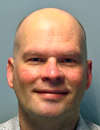
|
Shallow CNNs for the Reliable Detection of Facial Marks
Facial marks are local irregularities of skin texture and their type and/or spatial pattern can be used as a (soft) biometric modality in several applications. Detection may yield a high number of false positives. In this paper, we consider shallow Convolutional Neural Networks (CNNs) for facial mark detection that (a) successfully addresses the false positive problem, (b) remove the need for heuristic post processing steps, and (c) outperform other approaches taken in previous studies.
CAST-Mitglieder können hier die Vortragsunterlagen herunterladen.
|
||||||||||||||||||||||||||||||||||||||||||||||||||||||||||||||||
| 10:10 | |||||||||||||||||||||||||||||||||||||||||||||||||||||||||||||||||
|
Fariborz Taherkhani
West Virginia University

|
Facial Attribute Guided Deep Cross-Modal Hashing for Face Image Retrieval
In this paper, we propose an Attribute-based Deep Cross Modal Hashing (ADCMH) network which takes facial attribute modality as a query to retrieve relevant face images. The ADCMH network can efficiently generate compact binary codes to preserve similarity between two modalities (i.e., facial attribute and image modalities) in the Hamming space. Our ADCMH is an end to end deep cross-modal hashing network, which jointly learns similarity preserving features and also compensates for the quantization error due to the hashing of the continuous representation of modalities to binary codes.
CAST-Mitglieder können hier die Vortragsunterlagen herunterladen.
|
||||||||||||||||||||||||||||||||||||||||||||||||||||||||||||||||
| 10:40 | Break | ||||||||||||||||||||||||||||||||||||||||||||||||||||||||||||||||
| 11:15 | |||||||||||||||||||||||||||||||||||||||||||||||||||||||||||||||||
|
Martin Stokkenes
NTNU

|
Improved Fingerphoto Verification System Using Multi-scale Second Order Local Structures
In this work, we explore application of fingerphotos as authentication mechanism on smartphones. A novel verification framework is proposed, based on the features extracted from the eigenvalues of convolved images using multi-scale second order Gaussian derivatives. The framework is used to authenticate individuals based on images/videos of their fingers captured using the built-in smartphone cameras.
CAST-Mitglieder können hier die Vortragsunterlagen herunterladen.
|
||||||||||||||||||||||||||||||||||||||||||||||||||||||||||||||||
| 11:45 | |||||||||||||||||||||||||||||||||||||||||||||||||||||||||||||||||
|
Pedro M. Ferreira
Inesc Tec

|
Robust Clustering-based Segmentation Methods for Fingerprint Recognition
This paper focuses on the foreground mask estimation which is crucial for the accuracy of a fingerprint recognition system. The method consists of a robust cluster-based fingerprint segmentation framework incorporating an additional step to deal with pixels that were rejected as foreground in a decision considered not reliable enough. These rejected pixels are then further analysed for a more accurate classification.
CAST-Mitglieder können hier die Vortragsunterlagen herunterladen.
|
||||||||||||||||||||||||||||||||||||||||||||||||||||||||||||||||
| 12:15 | |||||||||||||||||||||||||||||||||||||||||||||||||||||||||||||||||
|
Patrick Schuch
NTNU

|
Estimating the Data Origin of Fingerprint Samples
The data origin (i.e. acquisition technique and acquisition mode) can have a significant impact on the appearance and characteristics of a fingerprint sample. This dataset bias might be challenging for processes like biometric feature extraction. Much effort can be put into data normalization or into processes able to deal with almost any input data. The performance of the former might suffer from this general applicability. The latter losses information by definition. If one is able to reliably identify the data origin of fingerprints, one will be able to dispatch the samples to specialized processes. Six methods of classification are evaluated for their capabilities to distinguish between fifteen different datasets. Acquisition technique and acquisition mode can be classified very accurately. Also, most of the datasets can be distinguished reliably.
CAST-Mitglieder können hier die Vortragsunterlagen herunterladen.
|
||||||||||||||||||||||||||||||||||||||||||||||||||||||||||||||||
| 12:45 | Lunch-Break | ||||||||||||||||||||||||||||||||||||||||||||||||||||||||||||||||
| 13:55 | |||||||||||||||||||||||||||||||||||||||||||||||||||||||||||||||||
|
Jose Patino
EURECOM
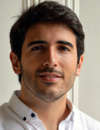
|
Enhanced low-latency speaker spotting using selective cluster enrichment
Low-latency speaker spotting (LLSS) calls for the rapid detection of known speakers within multi-speaker audio streams. While previous work showed the potential to develop efficient LLSS solutions by combining speaker diarization and speaker detection within an online processing framework, it failed to move significantly beyond the traditional definition of diarization. This paper shows that the latter needs rethinking and that a diarization sub-system tailored to the end application, rather than to the minimisation of the diarization error rate, can improve LLSS performance.
CAST-Mitglieder können hier die Vortragsunterlagen herunterladen.
|
||||||||||||||||||||||||||||||||||||||||||||||||||||||||||||||||
| 14:25 | |||||||||||||||||||||||||||||||||||||||||||||||||||||||||||||||||
|
Abdul Serwadda
Texas Tech University

|
Jekyll and Hyde: On The Double-Faced Nature of Smart-Phone Sensor Noise Injection
Noise injection has been widely proposed as a solution to thwart privacy attacks that exploit the motion and orientation sensors embedded in mobile devices, however, little research has focused on how noise injection schemes would affect continuous authentication applications. In this research, we empirically study the impact of noise injection on continuous authentication applications and find that the noise thresholds needed to overcome the attacks would significantly degrade the performance of these applications. The paper argues against noise injection as a defense against attacks that exploit motion and orientation sensor data on mobile and wearable devices.
CAST-Mitglieder können hier die Vortragsunterlagen herunterladen.
|
||||||||||||||||||||||||||||||||||||||||||||||||||||||||||||||||
| 14:55 | |||||||||||||||||||||||||||||||||||||||||||||||||||||||||||||||||
|
Erwin Haasnoot
NTNU
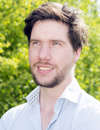
|
Predicted Templates: Learning-curve Based Template Projection for Keystroke Dynamics
People change their behaviour in response changing environmental factors, but also to increased practice. In Keystroke Dynamics (KD), such behavioral changes are usually accounted for by re-actively updating templates, which is a complex operation that introduces many security concerns. In this presentation, we take first steps towards pro-actively predicting templates based on mathematical models of learning taken from cognitive and psychological sciences.
CAST-Mitglieder können hier die Vortragsunterlagen herunterladen.
|
||||||||||||||||||||||||||||||||||||||||||||||||||||||||||||||||
| 15:25 | Break | ||||||||||||||||||||||||||||||||||||||||||||||||||||||||||||||||
| 16:00 | |||||||||||||||||||||||||||||||||||||||||||||||||||||||||||||||||
|
Stephanie Schuckers
Clarkson University

|
KEYNOTE
The Coming of Age of Presentation Attack Detection
Presentation attacks are attacks at a biometric recognition data capture sensor which interfere with its normal operation. Such attacks could include artefacts with biometric characteristics such as printouts, image/video display, or reproductions made of gelatin, glue, silicon, or plastic. Software and hardware-based presentation attack detection (PAD) components have been developed to reduce this vulnerability. Over the last twenty years of research and development, it has been more commonly termed spoofing and the methods used to detect spoofs have been called liveness detection. Biometric recognition systems which include PAD are coming of age with wide-spread commercialization. This is motivated by the recognition of the need to minimize this vulnerability as biometric technology explodes particularly in the consumer marketplace. This talk gives an overview of this field, describes vocabulary formalized by the ISO standard for biometric presentation attack detection, and discusses evaluating the performance of systems which incorporate methods to detect and reject presentation attacks. In addition, an overview of the recently announced FIDO biometric certification program for mobile/consumer space will be given. This program includes a PAD testing component. Some considerations for the future of presentation attack detection are discussed.
CAST-Mitglieder können hier die Vortragsunterlagen herunterladen.
|
||||||||||||||||||||||||||||||||||||||||||||||||||||||||||||||||
| 16:40 | |||||||||||||||||||||||||||||||||||||||||||||||||||||||||||||||||
|
Christoph Busch
Hochschule Darmstadt

|
Awards/ Closing Remarks
|
||||||||||||||||||||||||||||||||||||||||||||||||||||||||||||||||
Wenn Sie noch Fragen haben, wenden Sie sich bitte an:
Christoph Busch
Tel.: +49 (0) 6151/16-30090
E-Mail: christoph.busch@cast-forum.de
Simone Zimmermann
CAST e.V.
Tel.: +49 6151 869-230
E-Mail: simone.zimmermann![]() cast-forum.de
cast-forum.de
| ID:SMART 2026 Workshop | 18.-19.02.2026 |
| Recht und IT-Sicherheit | 05.03.2026 |
| 25th International Conference of the Biometrics Special Interest Group (BIOSIG 2026) | 25.-26.11.2026 |